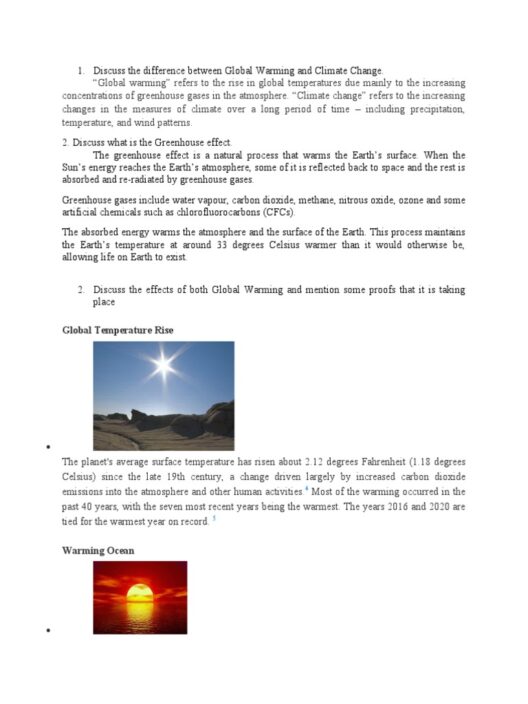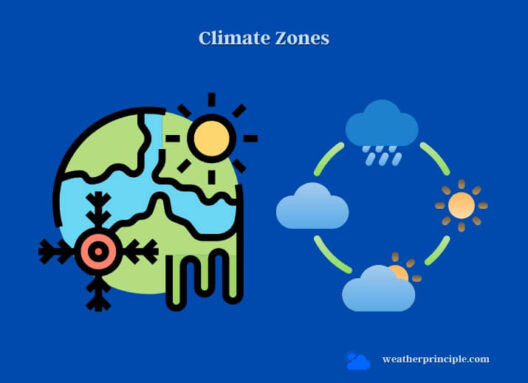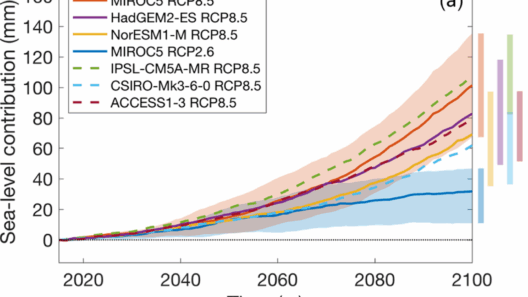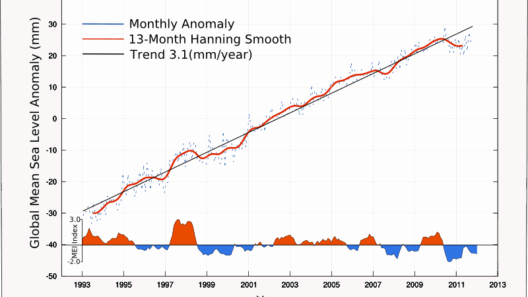Miami is a vibrant city, a kaleidoscope of cultures, nightlife, and serene beaches that unfurl like a painter’s canvas against the azure backdrop of the Atlantic Ocean. Yet, beneath this picturesque veneer lies a pressing issue: the existential threat of rising sea levels. As the oceans swell, they gradually encroach upon Miami’s coastal areas, reminding its inhabitants that beauty can be perilously deceptive.
At the heart of this phenomenon is climate change, often likened to a slow-moving, relentless tide that gradually erodes not only the physical landscape but also the very essence of life in coastal cities. With projections indicating that sea levels could rise by as much as six feet by the end of the century, the stakes have never been higher.
Understanding the mechanics of rising sea levels is critical. Sea levels rise primarily due to two factors: the melting of glaciers and ice sheets, and the thermal expansion of seawater as it warms. The Arctic and Antarctic are shedding ice at alarming rates, while the heat absorbed by the oceans causes the water to expand. Together, these elements form a formidable challenge for low-lying coastal regions like Miami.
Underestimating the enormity of this crisis could lead to catastrophic consequences. The sea creeping inland is like an invisible predator, stealthily advancing while the vibrant life of the city continues unabated. However, scientists assert that the impact is already palpable; in Miami, sunny-day flooding is occurring with greater frequency. On days marked with clear skies, streets that were once bustling with cars and pedestrians now resemble waterways, creating an uncanny juxtaposition to everyday life.
The environmental ramifications of rising sea levels extend beyond mere inconveniences. Wetlands, often referred to as “nature’s sponges,” play a crucial role in coastal ecosystems by absorbing floodwaters and providing habitats for diverse wildlife. Yet, as seawater inundates these vital areas, both biodiversity and the livelihoods dependent upon these ecosystems are jeopardized. The metaphor of a sponge overflowing paints a vivid picture of saturated landscapes choking under the weight of the ocean’s advance.
The socio-economic implications are equally daunting. Miami’s economy thrives on tourism, real estate, and agriculture—all of which are at the mercy of the rising tide. The area’s famed beaches, which draw millions of visitors a year, face erosion and deterioration. Property values are already showing signs of strain as prospective buyers grapple with the looming prospect of floods and storms exacerbated by climate change. The real estate market, supposed to be a sanctuary of stability, becomes the vessel tethering people to an uncertain future.
Yet, amid the existential dread surrounding Miami’s coastlines, residents are not passive observers. Local governments, non-profits, and citizen groups are actively seeking solutions. Innovative measures such as the construction of seawalls, enhancing natural barriers, and improved stormwater management are being proposed and implemented. The discourse surrounding these initiatives illuminates a broader narrative: a community determined to evolve and adapt in the face of looming threats.
A collaborative spirit among citizens, urban planners, and scientists is forming a tapestry of resilience—a reminder that challenges often spur innovation. As Miami embraces sustainable building practices and green infrastructure, it positions itself as a potential blueprint for other coastal cities grappling with similar crises.
The arts and culture scene in Miami adds another layer to this complex narrative. Artists are harnessing their creativity to address environmental issues, crafting works that evoke both urgency and hope. Murals depicting the ocean’s rise and digital installations highlighting the fragility of coastal ecosystems invite reflection, encouraging dialogue between community members that extends beyond generational divides. Through storytelling, the acute reality of climate change finds its footing in the collective consciousness of the population.
The notion of rising sea levels as a phenomenon etched in sunlight, rather than shadowed in fear, symbolizes Miami’s unique appeal. Citizens refuse to be mere spectators; they choose to actively engage, transforming concern into action. Events such as beach clean-ups and community forums reinforce connections between residents and their surroundings, fostering a sense of stewardship that is paramount in the fight against environmental decline.
As sea levels continue to rise, Miami stands as both a microcosm and a magnifying glass. It reflects the global crisis playing out on coastlines worldwide while also showcasing the myriad ways communities respond to impending challenges. In this coastal city, where paradise meets peril, the struggle against the rising tide embodies humanity’s eternal endeavor: to fight for a future that honors both nature and its inhabitants.
In conclusion, the question of whether the sea level is rising in Miami transcends mere statistics; it unfolds as a narrative steeped in urgency, resilience, and ingenuity. For Miami and its people, the response to this arduous journey is not merely about survival but rather the passionate pursuit of preservation. With every wave that licks at the shore, the call to action reverberates—a reminder that the fate of Miami is intrinsically tied to the tides, urging a collective effort to safeguard both habitat and heritage.







